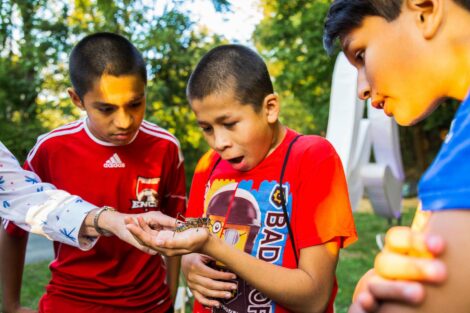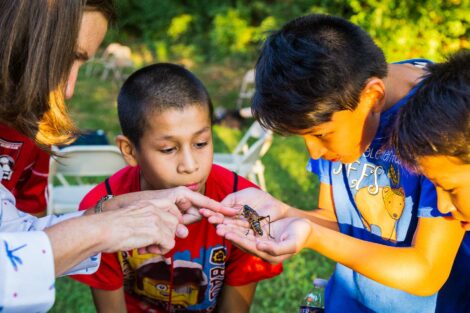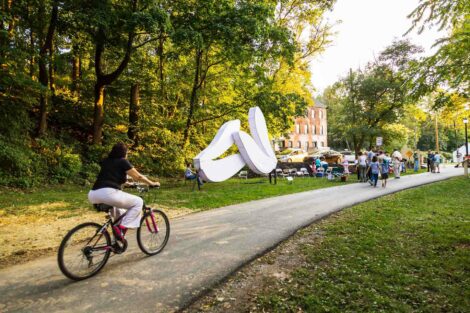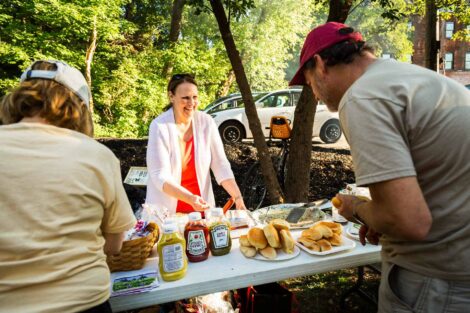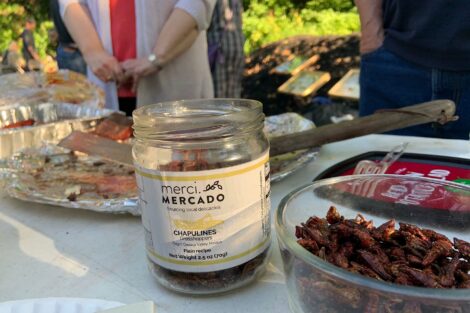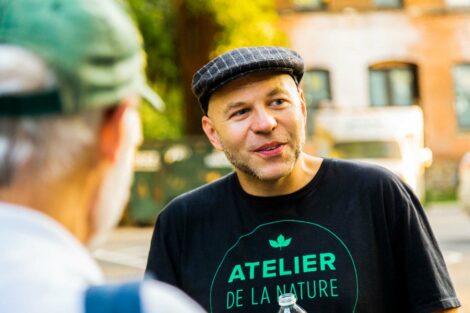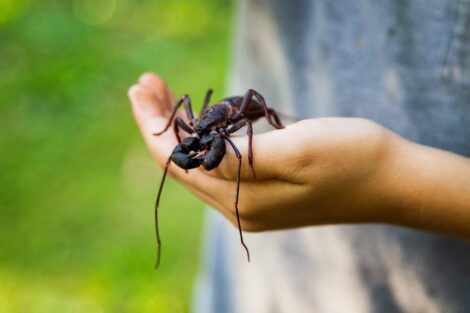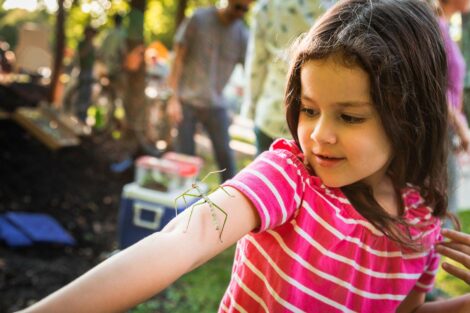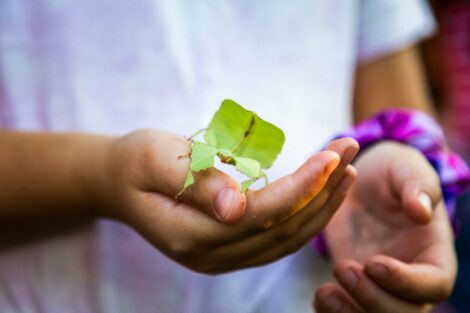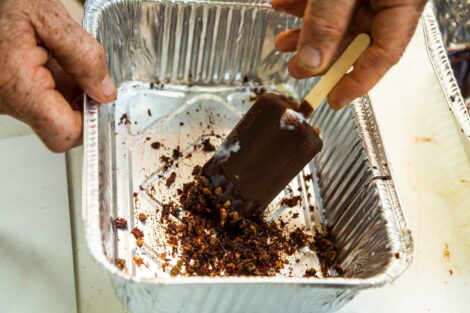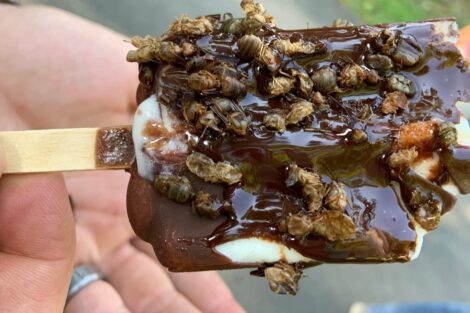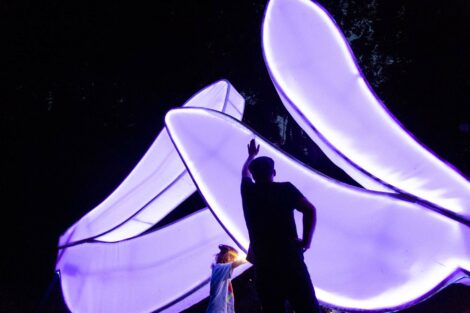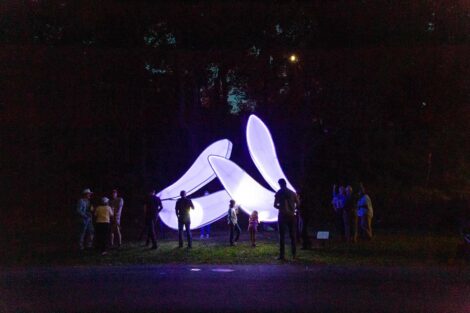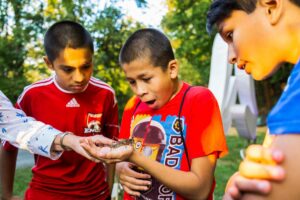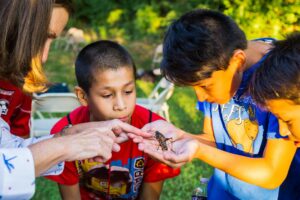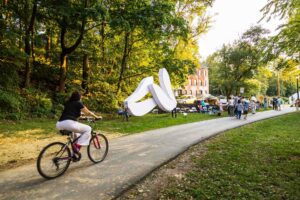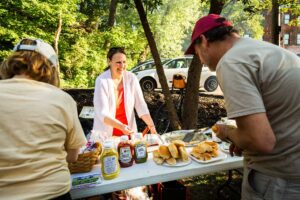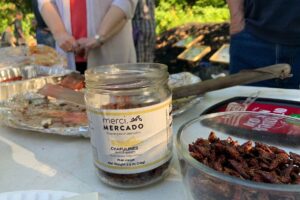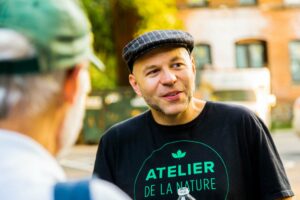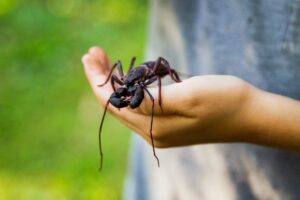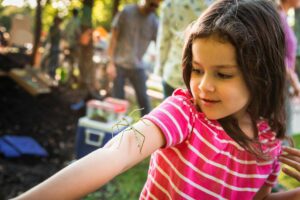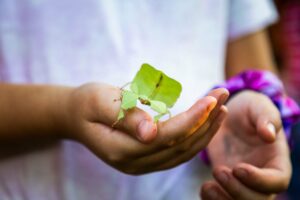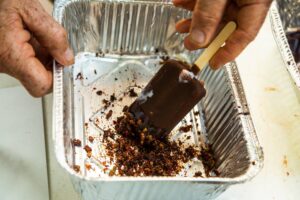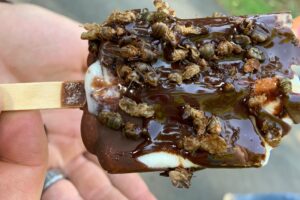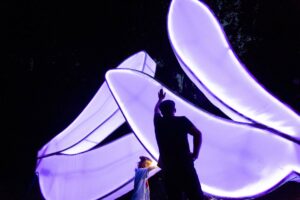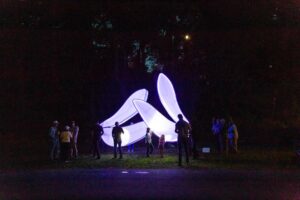By Stephen Wilson
When snacking on insects, there’s nothing worse than getting a bunch of pulvilli stuck in your teeth. But picking bug’s feet out of your teeth was inevitable at the bug and burger BBQ as people dipped their ice cream into queen weaver ants and dressed their hamburgers and hotdogs with spicy grasshoppers.
While eating bugs was the amuse-bouche, the main course was a weekend of insect investigation and adoration on the Karl Stirner Arts Trail (KSAT) that included panel discussions by biologists, engineers, fly-fishers, and entomologists, a petting zoo, presentations, projects on the Bushkill Creek, and art.
The petting zoo had kids covered, literally head to hand, in amazing insects like the giant “lubber locust” grasshopper, walking stick bugs, blue desert beetles, leaf bugs, and a whip scorpion.
“This is an opportunity to take art and science and couple it with concerns for nature and humanity,” says Jim Toia, director of community-based teaching in Lafayette’s art department and board chair for KSAT. “Events like these help us recognize our place in the environment and acknowledge our history and impact on land and water use.”
That impact was on display in a piece of public art by Brandon Ballengee, a visual artist, biologist, and environmental educator based in Louisiana. His wing-like piece “Love Motel for Insects” lights up the trail at the 13th Street entrance.
“We are living in a time of mass extinction. While other animals often come to mind first, insects are no different,” says Ballengee. He references the apocalypse that insects are experiencing, which makes reproduction key to survival; thus, the love motel.
“I was inspired by how UV light attracts both people and insects,” he says. So Ballengee began to place UV lights in sculptures in hopes that insects would mate and people would learn. His pieces have interacted with architecture and landscapes around the world, from the National Zoologic Park in Washington D.C., to train cars in Laramie, Wyo., from Central Park in New York City to an abandoned church in the Netherlands.
His pieces, like the one on KSAT, borrow their shapes from nature whether it be luna moth or dragonfly wings.
“I want to activate positive ecological action, citizen science through apps like iNaturalist, and youth education and inspiration,” he says.
As the BBQ wanes and evening light recedes, blue-ish UV light transitions. People and bugs are transfixed by the glow and drawn over so that the love of bugs and between bugs and the love of nature and in nature all can coexist.
